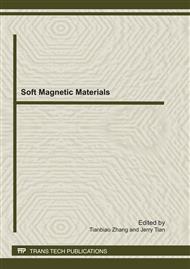p.51
p.56
p.63
p.68
p.73
p.78
p.84
p.90
p.96
The Influences of Material and Structure on the UV Protection of Summer Fabrics
Abstract:
Thin summer fabrics without anti-UV finishing were used as experimental samples and the influences of fabric thickness, tightness, structure and fiber on the anti-UV properties were observed carefully. The measured performance parameters were normalized, to make UV protection properties of different thickness, tightness, fabric structures and fiber materials are comparable. This investigation revealed that the dominant factors affecting fabric anti-ultraviolet property were fabric structure, thickness and fiber type. The anti-UV performance from strong to weak is satin, twill and plain weave in terms of fabric structure; and polyester, silk, hemp and cotton in terms of fiber material. In addition, the anti-UV performances of fabrics positively increase with their thickness, when the other parameters were kept the same.
Info:
Periodical:
Pages:
73-77
Citation:
Online since:
July 2011
Keywords:
Price:
Сopyright:
© 2011 Trans Tech Publications Ltd. All Rights Reserved
Share:
Citation:


